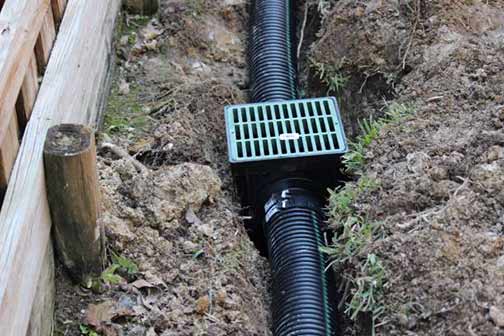
French drains are one of the most effective flood control systems you can install in your yard, says T-Square Management team. Part of what makes them so unique is they can be in place and fully operational without altering the aesthetic quality of your yard.
Unlike some flood control measures that are ugly and will often disfigure your landscaping, French drains fit perfectly into your yard’s existing design. Yet the very thing that makes a French drain so great is also what makes it problematic.
Because French drains are buried in the ground, they are susceptible to clogging, and if the channel becomes filled with soil, French drains will slowly lose their function. The worst part is there is no easy way to access the French drain to clean it.
You don’t want to dig up your French drain to clean it whenever it gets clogged. That is costly and completely unrealistic. How do you clean a French drain? This post will explain the professional techniques for cleaning French drains.
Professional tips for cleaning a French drain
Firstly, how do you know when your French drain is due for cleaning? You may see the following signs in your yard:
- Flooding or waterlogging
This is the very problem that a French drain is meant to solve. If you see stagnant water in your yard, the French drain is probably clogged.
- Foul odors in the yard
Water trapped inside the French drain can become rancid as it breeds mosquitoes, bacteria, algae, mold and other organisms.
- The basement is damp
If you installed the French drain to direct water away from your basement or foundation, you may see signs of dampness in these areas.
To clean the drain, these are the steps that a professional drain-cleaning service would take:
- Locate the access point or clean-out port
This will be a grate lying flush with the surface of your lawn or a pipe sticking out above the ground. Remove the cap to see into the basin and understand what is happening. It is usual to have some sand and debris inside the basin.
- Do a camera inspection
A waterproof drain camera will give you access to go deep inside the drain and inspect it. If the line is badly clogged, the camera will not go all the way, but it will still give you a good idea of the problems you are dealing with.
- Run a hose into the drain
Stick a garden hose into the drain opening. You want at least three feet of the length of the hose inside the drain. Once the hose is in place, run the water. If your drain is completely blocked, you may see the water exiting from another point along the line.
- Go in with a drain cleaning machine
This is a heavy-duty machine with a rotating metal cable and a drum. The cable is inserted into the drain alongside the hose, with the water running. After the machine is on, the cable is pushed through the drain until it reaches the end of the line.
- Hydro-jet your French drain
If you are routinely cleaning your French drain, this step is not necessary, although it is helpful. Hydro-jetting the drain will clear the loosened debris inside the line and clean the gravel.
Your French drain should be restored to full functionality by now. However, if you still have problems after doing the above steps, maybe the drain needs more than cleaning. The drain could be damaged. In this case, it would be a great idea to have a professional plumber check the drain.
Tips for maintaining your French drain
To ensure maximum efficiency of your French drain and prolong its life, follow these simple steps:
- Do not drive or park heavy equipment on the ground above the French drain. Heavy loads can compact the soil around the drain and make it hard for water to drain from the pipe. Heavy loads may even crush the pipe.
- Keep the area above and around the French drain free of debris and overgrown vegetation. Make it easy to see the path of the drain across your yard. That way, it is easier to avoid digging around the area or taking other actions likely to damage the drain.
- Inspect and clean your French drain periodically. Don’t wait until the system becomes clogged and stops working. You want a timetable for flushing the system, as described above. Just insert a garden hose into the drain and run the water.
Finally, at least once every year, you want a professional plumber to inspect the drain and clean it professionally. If you do these steps, your French drain will never be clogged, and the system will likely last longer than its projected lifespan.


